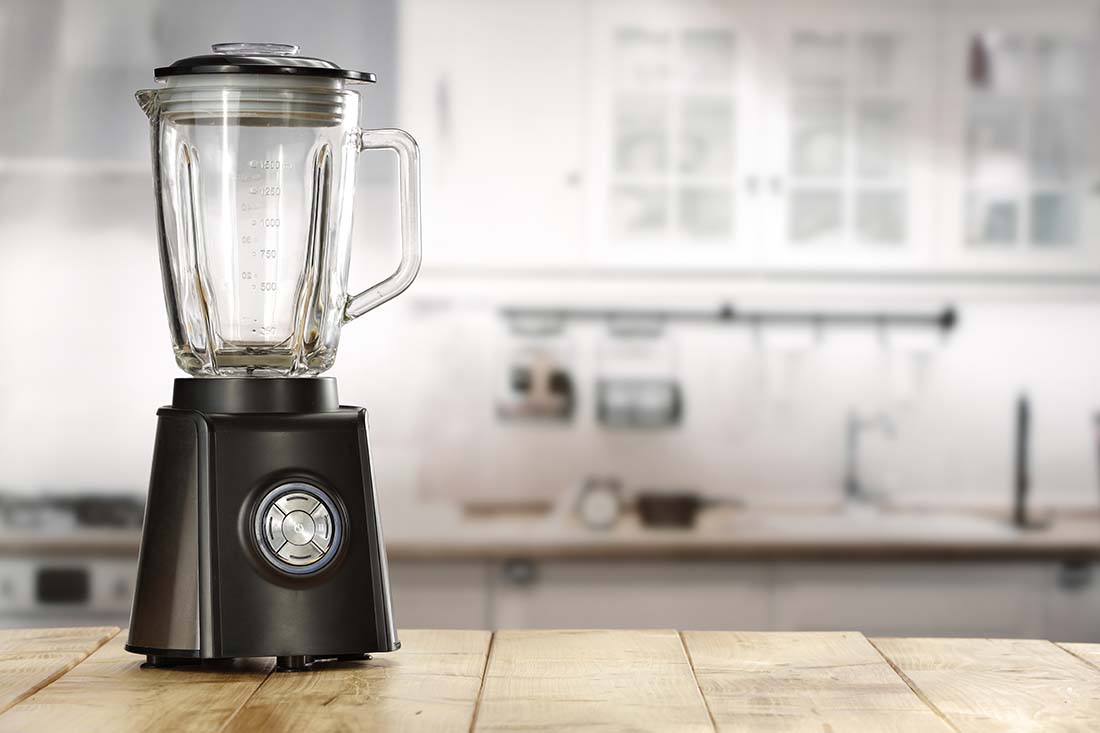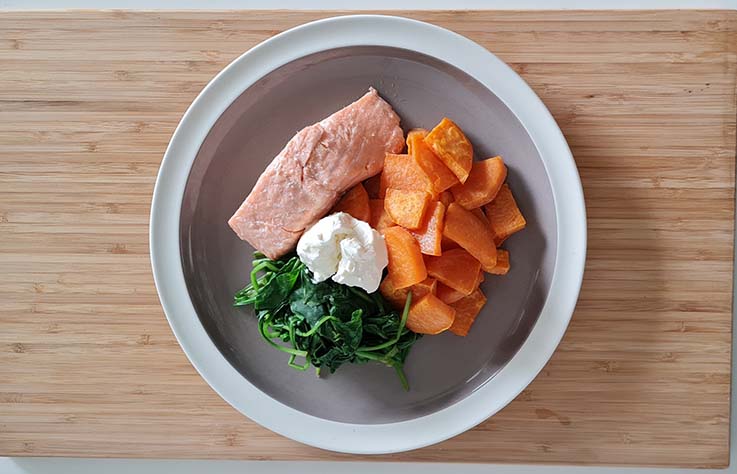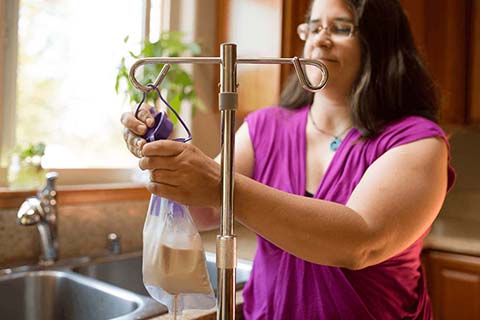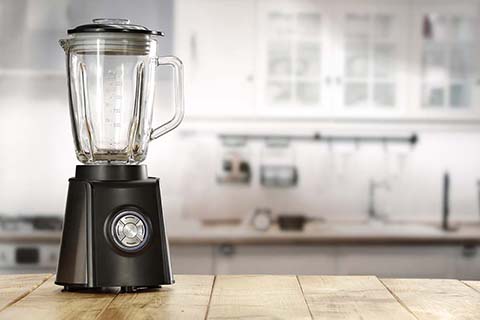So, You’re Thinking about a Blended Diet
If you’re thinking about a blended diet, here’s 10 things you need to do and know from two registered dietitians.
Contributing experts: Annina Whipp, Senior Paediatric Dietitian & Clare Thornton-Wood, Senior Paediatric Dietitian
1. Speak to your healthcare professional to seek their support
When thinking about a blended diet, chatting with your dietitian is an important first step, before you get started. They can provide you with the most accurate, tailored and specific advice suited to each child’s nutrient and feeding requirements. It’s important to remember that while blended diets work well for some families, for others they might not be suitable.
2. Using a blended diet alongside formula
If the preparation time of a blended diet is not practical for your family, you could consider the option of following a blended diet alongside formula feed – this may be known as bridge feeding or combination feeding. This is a medically approved option and is a helpful way to reduce the preparation time, while continuing to have greater control over the nutrient contents in the meals. This combined feeding approach may not be appropriate for every child, so remember to check in with your healthcare professional before starting this approach.
3. Think about the criteria
One of the earliest decision-making factors to consider when thinking about a blended diet is to first identify the medical criteria to start a blended diet. Not all children can feed using a blended diet and there are some factors to consider. For instance, the child must be older than 1 year old, the placement of the tube must be a gastrostomy, the child must be able to tolerate bolus feeds, and the child must not be immunocompromised. You should discuss this with your healthcare professional in greater depth to understand whether a child meets the blended diet criteria.
4. Think about how a blended diet fits in with everyday life
It may be helpful to consider how a blended diet will fit in with your daily life and family set-up. This will depend on how you choose to prepare the blends. You may choose to prepare the blends in advance, by storing the food in the freezer. In this instance, you should remember the importance of safe food hygiene and storage. In fact, many services such as school or nurseries will require parents and caregivers to complete a course on safe food preparation and storage. Alternatively, you may prefer to prepare the blends around family mealtimes. Including children in regular family mealtimes is a great way to give parents or caregivers a sense of togetherness in being able to feed their child, while also removing the ‘clinical’ feel of feeding.
5. Think about suitable blended diet meals
You should work closely with your dietitian to ensure that each blended diet meal is made up of suitable nutrients that will promote a child’s weight gain and growth.
All blended diet meals must be well balanced in line with the Eatwell Guide. This means that each meal must incorporate portions of starchy carbohydrates (rice, pasta, potatoes and grains), protein (meat, poultry, fish, pulses/ legumes), as well as fruit and vegetables. Remember that not all foods are suitable for blending and you should avoid foods with pips and seeds, as these do not blend well.
Watch out for blending pasta and potatoes as they tend to thicken when blended, so you may need to add more liquid to these. If the food has been stored in a fridge overnight, it may also require additional fluid to reach a desired consistency. However, when adding liquid, it’s important to remember that liquid can dilute the calories in a blend, so if you need to add a lot of fluid to a blend, aim to use high calorie fluids such as whole milk. A helpful tip to remember is that the desired consistency of a blend should be similar to single cream. Always discuss recipe options with your dietitian as you will need to remember to follow any previous dietary restrictions.
For recipe ideas, your dietitian may provide you with some ideas to get you started but family recipes are also a great way to begin. Alternatively, stay tuned for our blended diet recipe options which will be available on the Talking Tube Feeding website soon.
6. Link with other families
When thinking about a blended diet, your dietitian or healthcare professional may also link you with other families who have had a similar experience as you. Connecting with other families is a helpful and comforting way to gain real-life insight and may provide you with a better understanding around how different families may have managed with certain experiences. In difficult times, linking with other families will most importantly help you recognise that you are not alone. If you are interested, this is a simple process that your dietitian or healthcare professional will be able to arrange between two families.
7. Think about your wider network
You should consider how a blended diet may impact your wider network, such as schools or nurseries. Unlike formula feeds, blended diets are made using whole foods. Therefore, some places may need to carry out a risk assessment before allowing you to bring home-brought foods onto the site. Some schools or nurseries may operate as a strict nut-free zone, which will require you to swap out any meals that contain nuts before sending these blends to the school kitchen. You should also consider the aspect around safely storing the food when travelling to school. Some parents choose to store blended food in 60ml syringes inside a cool bag, which is placed in the fridge as soon as the child arrives at school. To avoid any unexpected encounters such as not being allowed to take a child’s blends into school, thinking about your wider network and how this will affect a child’s feeding routine is an important factor to consider.
8. Sourcing equipment
As blended diets are created in your own kitchen, you will need to have the necessary equipment and kitchen space to prepare the blends. A blender is the most vital piece of equipment, however it’s best to use a simple one while you’re still trialling a blended diet. Click here for a more extensive guide on equipment for tube feeding.
9. Evaluate costs and preparation time
To cater to a blended diet, you’ll need to source a range of equipment and have the time to prepare the blends. You may want to think about how the costs and preparation time will fit in with your everyday life.
10. Feeding with a formula is always an option
After trialling a blended diet, you may decide that this way of feeding is not the best option. Coming to this decision is okay – it’s always possible to return to formula feeding. You may even explore the option of combining a blended diet and formula approach which may even ease your food preparation time. Once you have started trialling a blended diet, do not feel tied to this approach should it not work for you. Instead, always work closely with your healthcare professionals to ensure that your child’s nutritional requirements are being met in the most appropriate ways.
Helpful Resources
Outside of appointments with your dietitian, you may find it beneficial to read helpful resources in your own time. As a starting point, you may find the following site on blended diets helpful:
Remember to ask your medical team to clarify anything you’re not sure of and always ask for their advice before taking that of others. Blended diets are a parental decision to be made in conjunction with advice from healthcare professionals.






